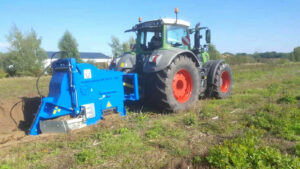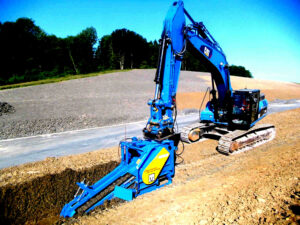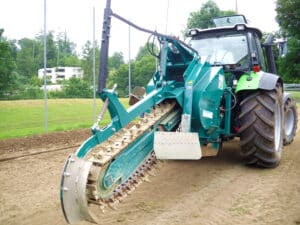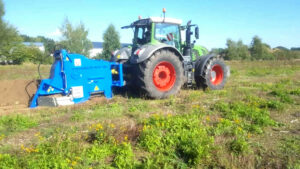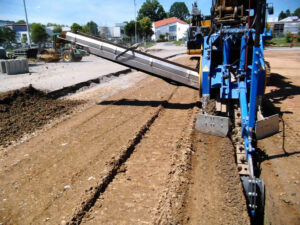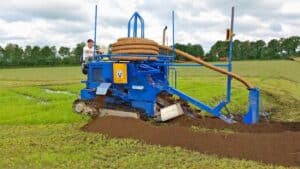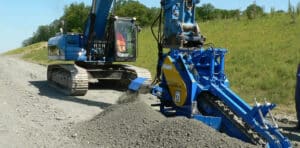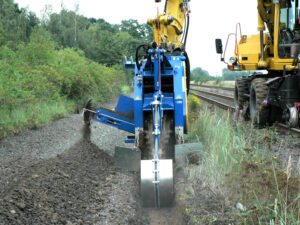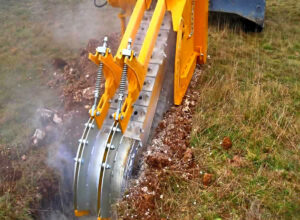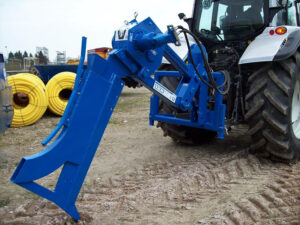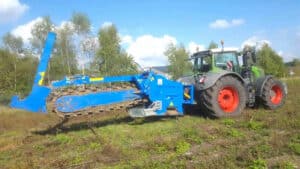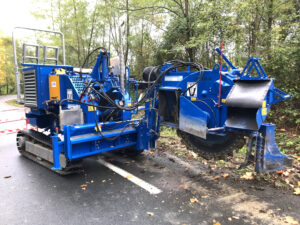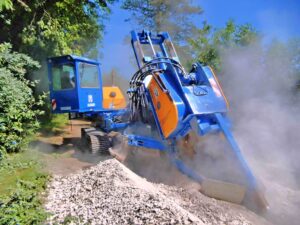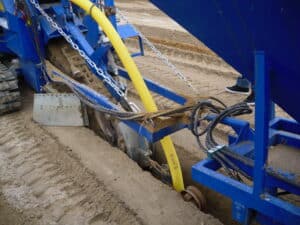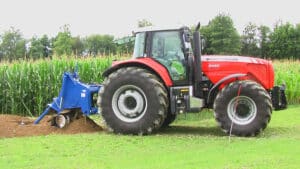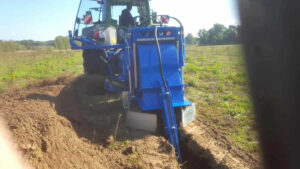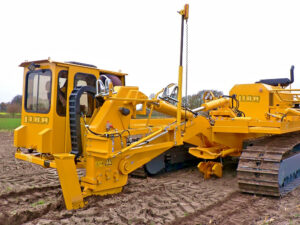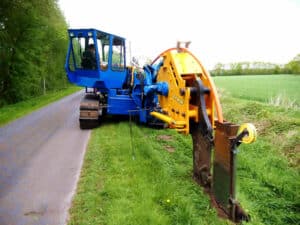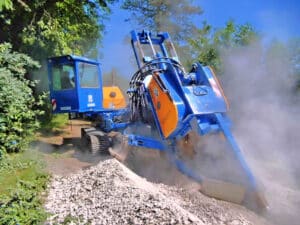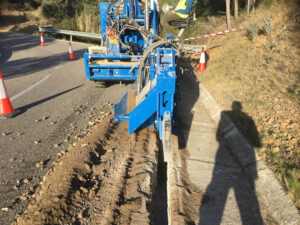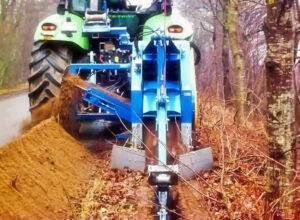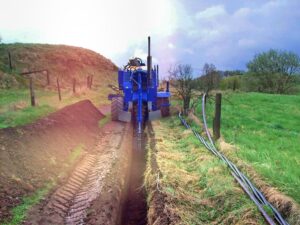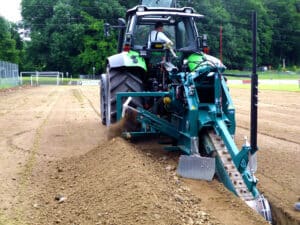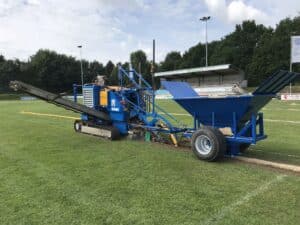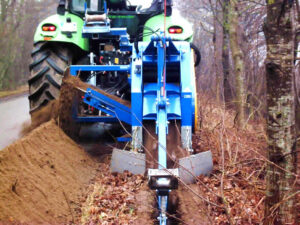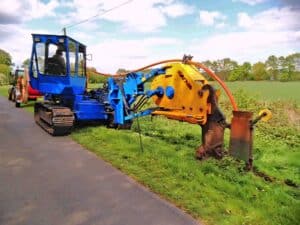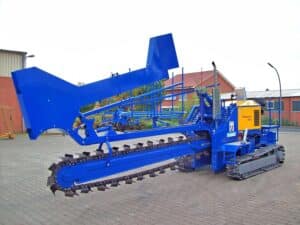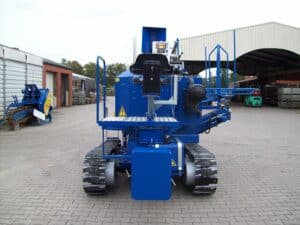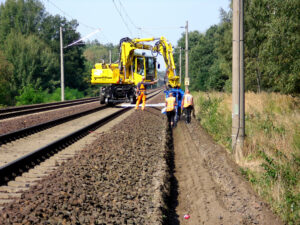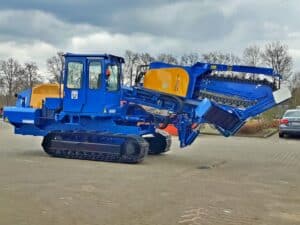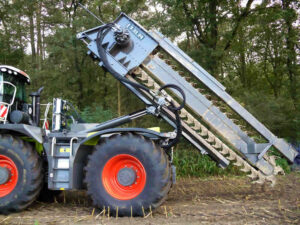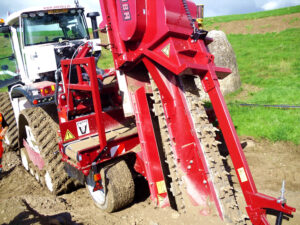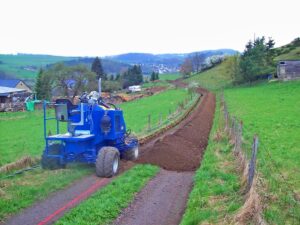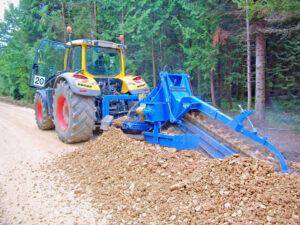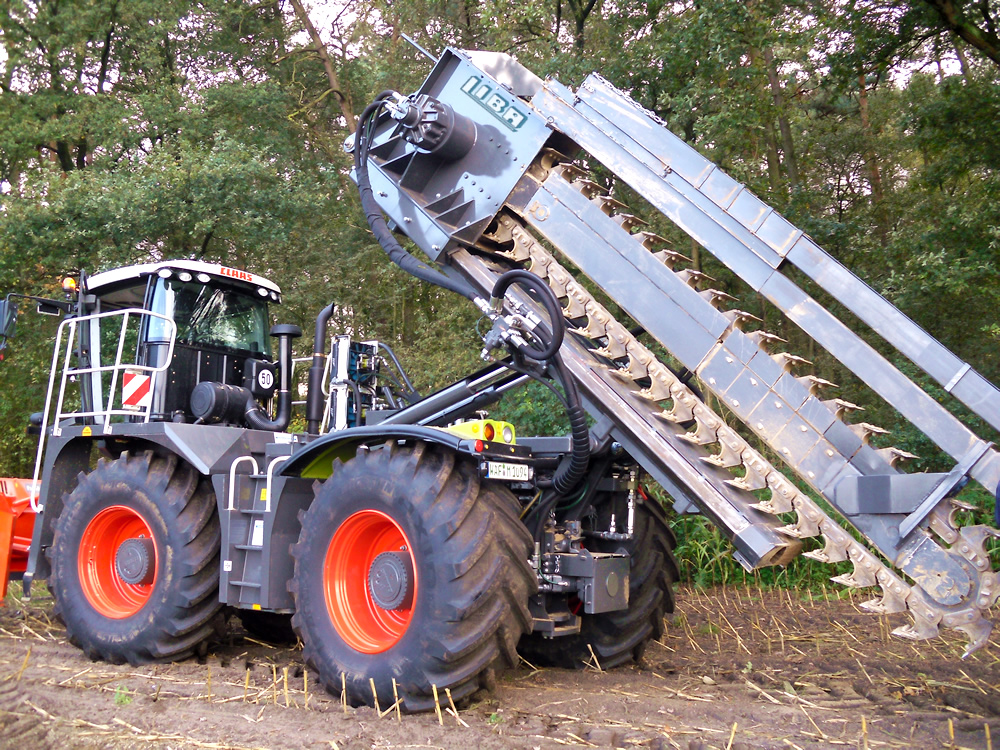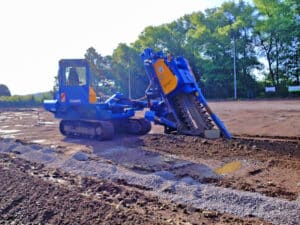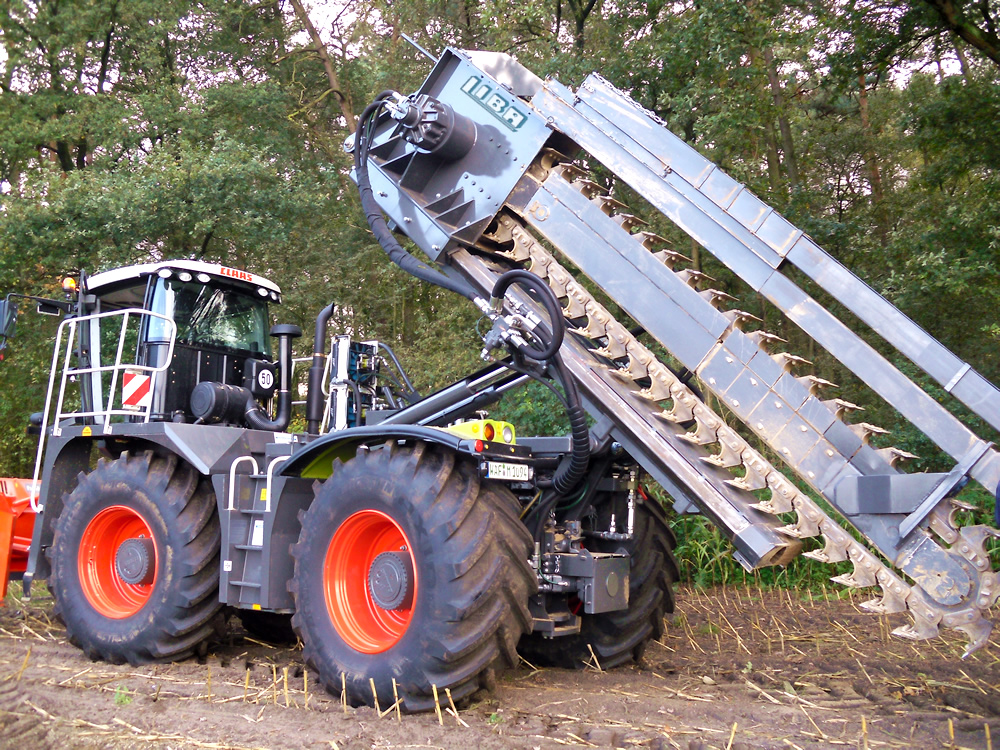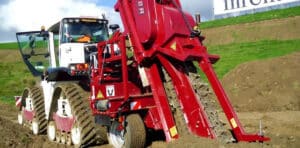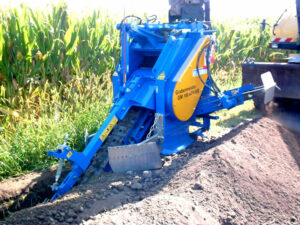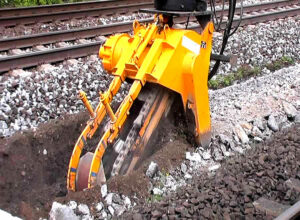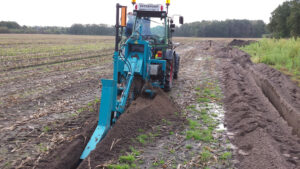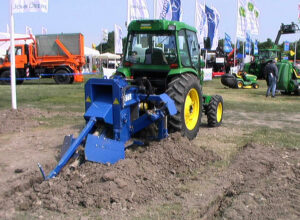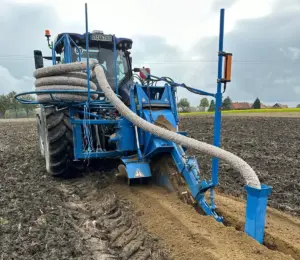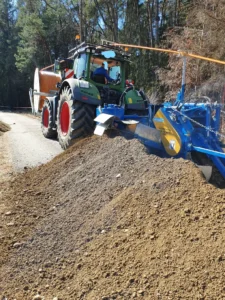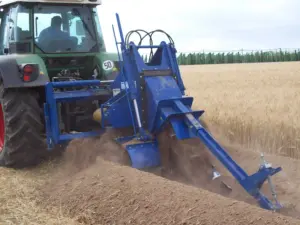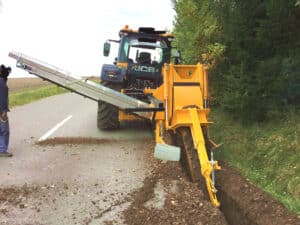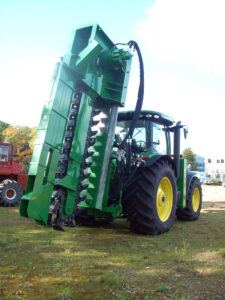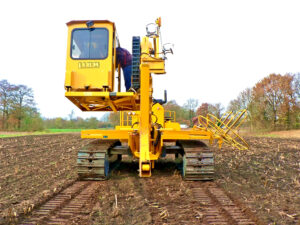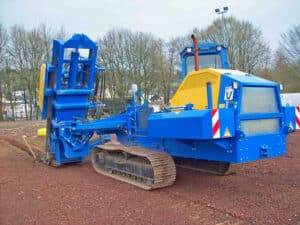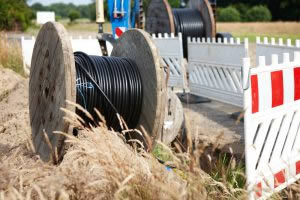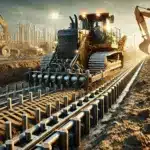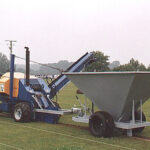Trenchers for cable and wire laying can be used to cut trenches for laying cables. Here are some steps you can follow to use a trencher in cable construction:
- Plan the route of the cables and mark the area where the trenches must be dug.
- Choose the right trencher for the size of the trench and the type of soil in which the trenches will be dug. Make sure the trencher is equipped with the correct cutter head and depth setting.
- Make sure the ground is free of obstacles such as rocks and roots that can make milling difficult or damage it.
- Place the trencher where you want the trench to start and lower the cutter head to the desired depth.
- Guide the trencher along the planned route of the trench and ensure that the cutter head always remains at the correct depth.
- Remove the excavated soil from the trench and place the cables inside. Make sure that the cables are laid in such a way that they are not damaged or interfere with each other.
- Fill the trench with the excavated soil and compact it to ensure that the cables are safe and protected.
- Check that the installed cables are working properly and comply with local regulations.
It is important to always take all necessary safety precautions when using a trencher and to carefully read the manufacturer’s operating instructions. In particular, make sure that you operate the trencher in a safe and proper manner and that the cables and wires are routed correctly to ensure that they are not damaged and that a reliable and effective cable system is provided.
Why a milling machine, and not an excavator for laying cables and lines?
A trencher has several advantages over an excavator when laying cables and lines:
- Precision: A trencher can work more precisely than an excavator because it is specially designed for trenching. This prevents cables and wires from being damaged, which is more likely to happen with an excavator due to the large range of motion and rougher working method.
- Speed: A trencher can cut trenches faster than an excavator because it is designed for this specific task. This saves time and also reduces the cost of laying cables and wires.
- Efficiency: A trencher typically generates less dirt and dust than an excavator because it deposits material right next to the trench. This also reduces cleanup and cleanup after cable and wire installation is complete.
- Accessibility: A trencher can work in tighter areas than an excavator because it is more compact and maneuverable. This facilitates the laying of cables and lines in areas with limited space.
- Environmental friendliness: A trencher produces less noise and exhaust fumes than an excavator, which reduces environmental impact.
In summary, a trencher is often the better choice compared to an excavator for cable and line laying due to its precision, speed, efficiency, accessibility and environmental friendliness.
To get a better insight into the performance and capabilities of the trencher working speed, we recommend you to watch our videos on https://lingener-baumaschinen.de/videos/. There you will find informative content and hands-on demonstrations that will show you how this machine can revolutionize your construction project. In addition to this, we invite you to visit our video channel on YouTube. There you will find more videos that provide detailed insights into the functions and use of the trencher working speed.

Suitable trenchers for cable and line laying are:
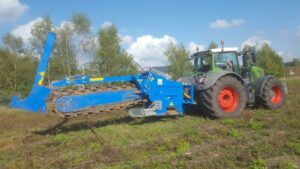
Cable laying with the GM 180 AF
Cable laying with the GM 180 AF The GM 180 AF trencher from Lingener Baumaschinen is a specialized machine for cable laying. It can effectively

Broadband trenching – the perfect machine GM 4 Allrad
In the modern world, fast and reliable Internet is indispensable. From streaming movies and music to working from home, effective communication and collaboration in today’s

Renewable energies and trenching – Efficient infrastructure for a sustainable future
The promotion of renewable energy is crucial for a sustainable and environmentally friendly future. When installing renewable energy infrastructures, such as geothermal probes or underground
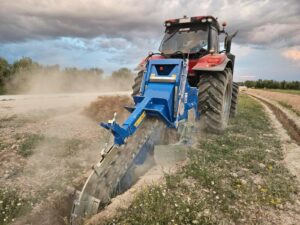
GM 160 AF – A trencher for Unimog
The GM 160 AF trencher from Lingener Baumaschinen is a powerful machine specially designed for use on a Unimog. It is ideal for the construction


